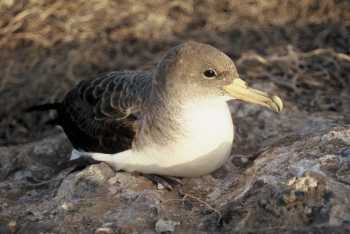Cristina Perry Nava (Departamento de Oceanografia e Pescas, Centro do IMAR da Universidade dos Açores, Horta, Faial, Azores, Portugal) and colleagues have published in the Journal of Ornithology on assortative mating in Cory’s Shearwater Calonectris borealis.
The paper’s abstract follows:
“Many bird species rely on visual cues for mate choice, including those provided by body /size or by the size of a body appendage. Mate choice based on size may lead to size-assortative mating, which may in turn have consequences for reproductive performance. In this study, we examined whether body size influences mate choice decisions of Cory’s Shearwater Calonectris borealis, a seabird with nocturnal activity on land. We found evidence of negative assortative mating for bill morphology (nostril height and bill length), but found no assortative mating according to body mass, tarsus length, and wing length. In addition, we investigated the influence of negative assortative mating and individual body size-related traits on reproductive performance, i.e., laying date and breeding success. We found that laying date and breeding success were not correlated with the extent of assortative mating, i.e., the assortatively mating breeders did not lay earlier and were not more likely to breed successfully. However, we found that heavier females (body mass measured during pre-laying) laid later in the season. We discuss these results in the light of possible effects of acoustic signals and foraging strategies on the mating pattern. Furthermore, we suggest that some female attributes may be crucial for breeding success in Cory’s Shearwaters.”

Cory's Shearwater, photograph by Paulo Catry
Reference:
Nava, C.P., Kim, S.-Y., Carvalho Magalhães, M. & Neves, V. 2014. Do Cory’s Shearwaters Calonectris borealischoose mates based on size? Journal of Ornithology DOI 10.1007/s10336-014-1070-8.
John Cooper, ACAP Information Officer, 28 May 2014

 English
English  Français
Français  Español
Español